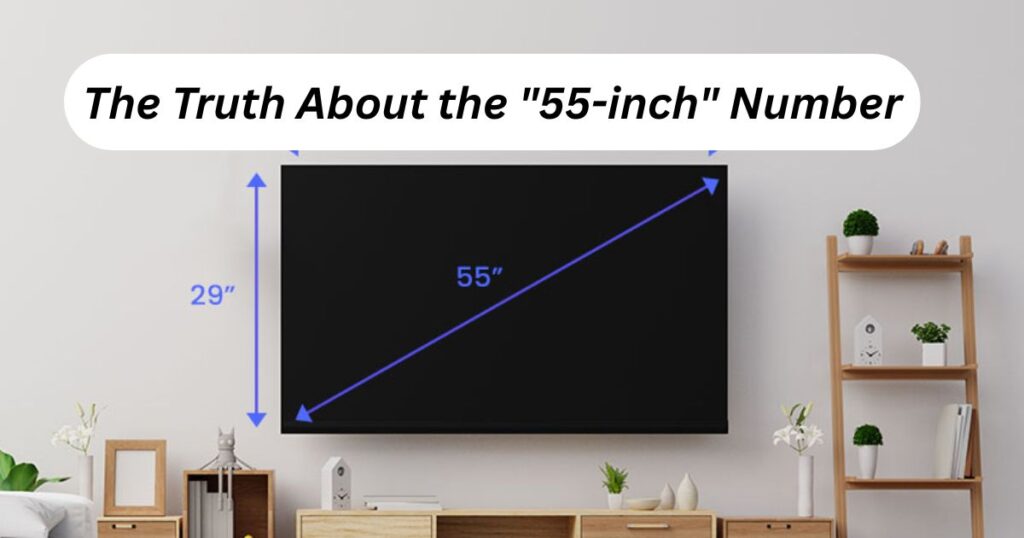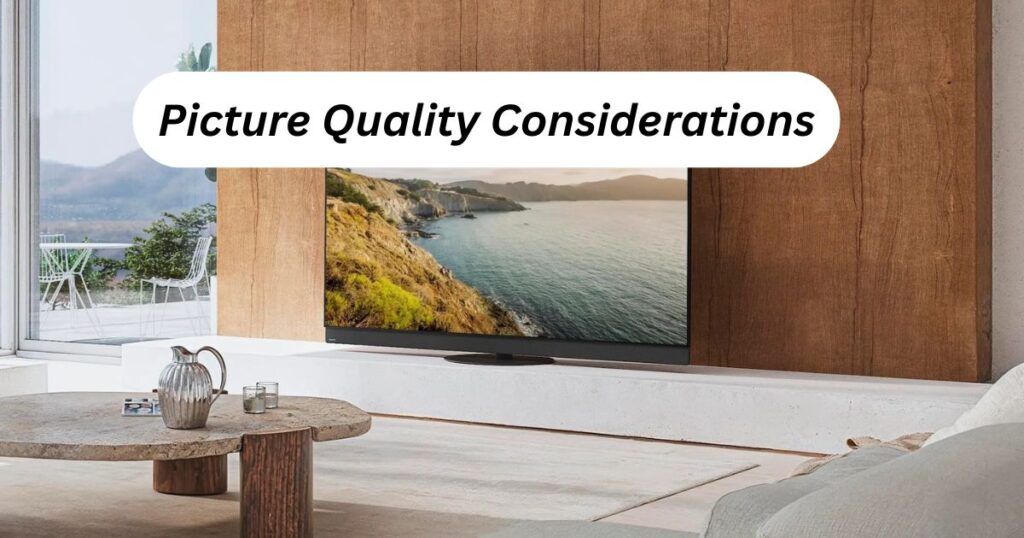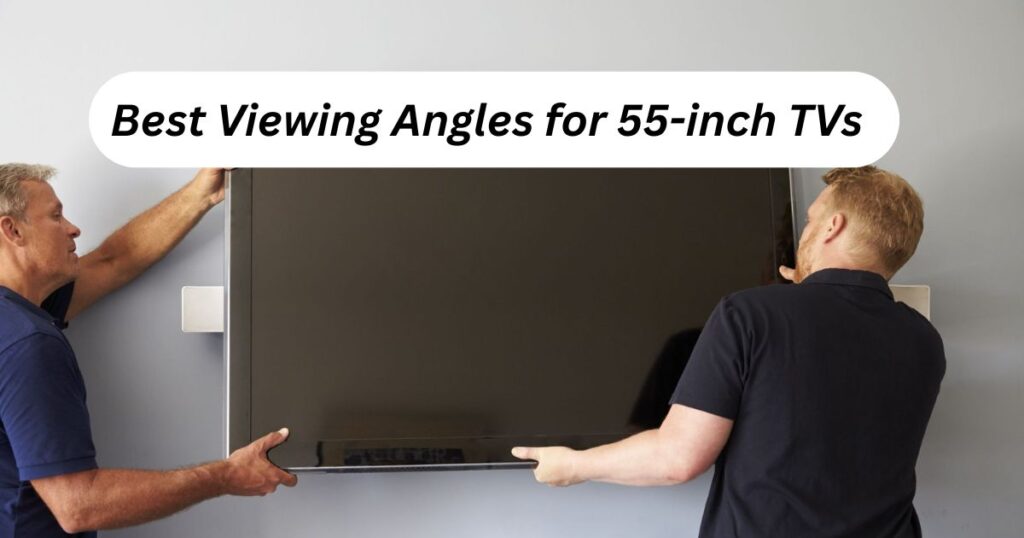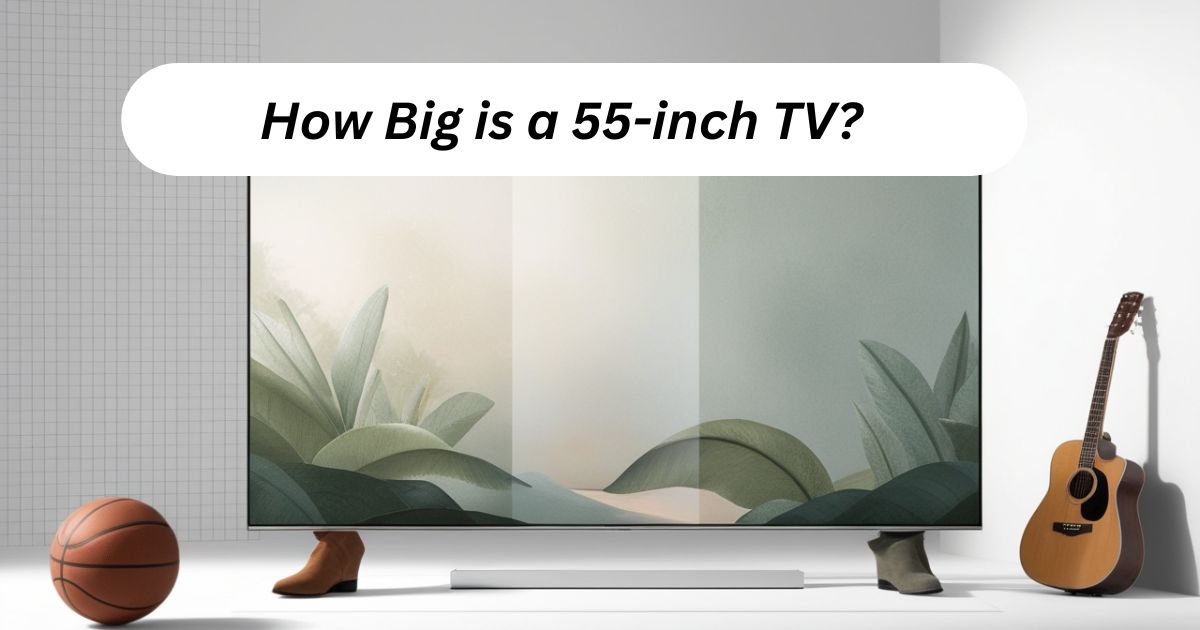Wondering exactly how much wall space that new 55-inch TV will require? Whether you’re upgrading your entertainment center or designing a new living space, understanding the true dimensions of a 55-inch TV is essential for making smart decisions.
This comprehensive guide breaks down everything from exact measurements to optimal viewing distances, helping you determine if a 55-inch TV is the perfect fit for your home.
Understanding TV Sizes: The Quick Answer
A 55-inch TV typically measures about 48 inches wide by 28 inches high. This popular size hits the sweet spot for many American homes, offering an immersive viewing experience without overwhelming most living spaces. The diagonal screen measurement of 139.7 centimeters gives you substantial viewing area while maintaining versatility in placement options.
Recent research from the Consumer Electronics Association shows that 55-inch TVs now account for over 35% of all TV purchases in the USA, making them the most popular size category for American households.
TV Measurements: Width, Height and Depth
Modern 55-inch TVs have become remarkably slim compared to older models. Here’s what you can expect in terms of physical dimensions:
| Dimension | Typical Measurement | Metric Equivalent |
| Width | 48 inches | 122 cm |
| Height | 28 inches | 71 cm |
| Depth | 2 to 3 inches | 5-7.6 cm |
| Weight | 35 to 45 pounds | 16 to 20 kg |
Most contemporary models maintain an incredibly slim profile of just 2 to 3 inches in depth without the stand. This sleek design allows for flush wall mounting and creates a modern aesthetic in any room. With weights ranging from 35 to 45 pounds, these TVs are substantial but still manageable for installation by one or two people.
The Truth About the “55-inch” Number

That 55-inch measurement might be confusing if you’re new to TV shopping. The number represents the screen’s diagonal length from one corner to the opposite corner—not the actual width of the TV.
Think of it like measuring a triangle from its longest point. If you were to place a measuring tape diagonally across your TV screen from the bottom left to the top right corner, you’d measure approximately 55 inches or 139.7 centimeters.
This industry standard method of measuring TVs dates back to the early days of television when screens were typically round, making diagonal measurement the most consistent approach.
Real-World Space Requirements
A 55-inch TV occupies approximately 12.5 square feet of wall space. For a practical visualization, imagine three standard movie posters placed side by side—that’s roughly the footprint you’ll need.
When planning your space, remember to account for:
- The actual TV dimensions (48″ × 28″)
- Additional clearance for ventilation (4 inches recommended)
- Space for peripherals like soundbars or media players
- Appropriate viewing distance (minimum 4 feet)
Interior designer Sarah Johnson notes: “Many homeowners underestimate the visual impact of a 55-inch TV in their space. I always recommend taping out the exact dimensions on your wall before purchasing to get a true sense of scale.”
Finding Your Perfect Viewing Distance
The ideal distance for watching a 55-inch 4K TV sits between 5.5 to 8.2 feet from the screen (approximately 1.7 to 2.5 meters). This range ensures you’ll catch all the fine details without straining your eyes.
Different resolutions have different optimal viewing distances:
| Resolution | Ideal Viewing Distance |
| 4K | 5.5 to 8.2 feet |
| 1080p | 7 to 11 feet |
| 8K | As close as 3.5 feet |
Many experts recommend the 6 feet mark as a particularly comfortable viewing distance for most viewers with 55-inch 4K TVs. At this distance, your field of vision is filled appropriately without requiring excessive eye movement.
Mounting Options: Wall vs. Stand
When setting up your 55-inch TV, you have two primary installation options: wall mounting or using a stand. Each offers distinct advantages depending on your space and preferences.
Wall mounting saves valuable floor space and creates a cleaner, more streamlined look. Most 55-inch TVs are compatible with standard wall mounts designed for their weight class (35 to 45 pounds). For optimal viewing, mount your TV so the center of the screen aligns with your eye level when seated.
If you prefer using a TV stand, look for furniture at least 50 inches wide to provide proper stability. This width ensures the TV won’t be prone to tipping and offers adequate support for the full base of your television.
Entertainment specialist Thomas Reed explains: “Wall mounting has become increasingly popular for 55-inch TVs because modern slim designs look almost like artwork when properly installed. However, some homeowners still prefer stands for the flexibility to rearrange their space.”
2025 Buying Tip: Check for Mini-LED or QD-OLED Technology
Standards, display tech has advanced beyond basic LED and OLED. Look for “Mini-LED” or “QD-OLED” screens that offer better brightness, improved contrast, and longer lifespan. These displays are ideal for bright rooms or daytime TV watching.
Also, the Eco Label Rating has been introduced in many U.S. states in 2025 to help identify energy-efficient and recyclable models. Check the back panel or packaging for this label before you buy.
Room Size Compatibility
A 55-inch TV works perfectly in rooms measuring 10×12 feet to 14×16 feet. This size range represents the typical dimensions of American living rooms and master bedrooms, making the 55-inch TV an ideal match for most homes.
For smaller spaces like apartments or modest bedrooms, a 55-inch TV can still work well if the room is at least 10×10 feet and you can maintain a minimum viewing distance of 4 feet. In extremely tight spaces, consider corner mounting or swivel mounts to optimize your layout.
Research by home entertainment specialists indicates that 55-inch TVs strike an optimal balance between immersion and practicality for the average American living room size of approximately 12×18 feet.
Picture Quality Considerations

Today’s 55-inch TVs come packed with impressive specs that significantly impact your viewing experience. At this screen size, the differences between display technologies become readily apparent.
Key features to consider include:
- 4K resolution (or 8K resolution for future-proofing)
- HDR support for enhanced contrast and color
- Refresh rates of 120Hz or higher for smooth motion
- Display technology: LED vs. OLED (with OLED offering superior contrast)
At the 55-inch size, 4K resolution provides noticeably sharper images than 1080p, particularly when viewed from distances of 5.5 to 8.2 feet. While 8K resolution exists, most experts agree the benefits are minimal at the 55-inch size unless you’re sitting unusually close to the screen.
Smart Features Worth Considering
Modern 55-inch TVs offer impressive connectivity options and intelligent features that enhance your entertainment experience. Leading brands like Samsung, LG, and Sony provide regular software updates to keep your TV’s capabilities current.
Key smart features to look for include:
- Built-in streaming apps (Netflix, Hulu, Disney+, etc.)
- Voice control capabilities (Alexa, Google Assistant)
- Smart home integration with other devices
- Multiple HDMI ports (look for HDMI 2.1 for next-gen gaming)
- Sufficient USB connections for external media
The processing power behind these smart platforms varies by manufacturer, with premium models offering more responsive interfaces and smoother multitasking between apps.
Comparing Common TV Sizes
A 55-inch TV sits right in the middle of popular TV sizes. Here’s how it compares to other common options:
| TV Size | Width | Height | Viewing Distance | Best For |
| 43-inch | 38″ | 22″ | 4.3-7 feet | Small rooms, bedrooms |
| 50-inch | 44″ | 25″ | 5-8 feet | Medium rooms |
| 55-inch | 48″ | 28″ | 5.5-8.2 feet | Medium-large living spaces |
| 65-inch | 57″ | 32″ | 6.5-9.8 feet | Larger living rooms |
| 75-inch | 66″ | 37″ | 7.5-11.5 feet | Dedicated home theaters |
This comparison highlights why the 55-inch TV has become so popular—it’s noticeably larger than 43-inch and 50-inch models but doesn’t require the significant wall space and viewing distance of 65-inch and 75-inch options.
Installation Tips
Whether mounting your 55-inch TV or using a stand, proper installation ensures optimal performance and safety. Consider these professional recommendations:
- Ensure at least 2-3 inches of ventilation space around all sides of the unit
- Position the center of the screen at eye level when seated (typically 42-48″ from the floor)
- Use appropriate mounting hardware rated for 35 to 45 pounds
- Consider professional installation for wall mounting to ensure proper placement
- Verify your power source can handle the TV’s electrical requirements (60 to 100 watts)
Improper installation not only affects viewing comfort but can also impact your TV’s longevity. Adequate ventilation prevents overheating, while proper mounting prevents accidents or damage.
Energy Efficiency and Operating Costs
Modern 55-inch LED TVs are surprisingly efficient, typically consuming between 60 to 100 watts during operation. This efficiency translates to lower electricity bills compared to older models, despite the larger screen size.
Annual operating costs for a 55-inch TV used approximately 5 hours daily average around $25-35 in most U.S. states. OLED models might consume slightly more power when displaying bright content but can be more efficient with darker scenes.
Energy efficiency can vary significantly between models, so look for ENERGY STAR certification if minimizing power consumption is important to you.
Best Viewing Angles for 55-inch TVs

Most modern 55-inch TVs offer viewing angles between 30 to 40 degrees from center. For family rooms, arrange seating within this range to ensure everyone enjoys optimal picture quality.
The technology behind your TV significantly affects viewing angles:
- LED TVs typically have more limited viewing angles, with image quality degrading when viewed from extreme sides
- OLED displays offer superior off-angle viewing, maintaining color and contrast even at extreme positions
For optimal arrangement in a living room setting, position primary seating directly in front of the TV and keep secondary seating within the 30 to 40 degrees viewing cone when possible.
Sound Considerations and Space Planning
Despite their impressive visuals, built-in speakers on 55-inch TVs often need supplementing for a truly immersive experience. When planning your setup, consider:
- Space for a soundbar (2 to 4 inches high and 30 to 40 inches wide)
- Room acoustics and potential sound reflection
- Placement of satellite speakers for surround systems
- Cable management for audio components
Audio expert Michael Torres advises: “Even the best 55-inch TVs benefit enormously from external audio solutions. The thin profile of modern TVs simply can’t accommodate speakers capable of producing rich, room-filling sound.”
Cable Management Solutions
Modern 55-inch TVs come with multiple HDMI ports and other connections. Planning your cable management early ensures a clean, professional-looking installation.
Many contemporary models offer innovative solutions like channeled legs or removable panels to keep wires tidy. For wall-mounted installations, consider in-wall cable routing options or cord covers that can be painted to match your wall color.
Professional installers recommend leaving slight cable slack to prevent tension on connections while using cable ties or channels to maintain organization behind your TV.
Common Setup Mistakes to Avoid
Even experienced home theater enthusiasts sometimes make these common errors when setting up a 55-inch TV:
- Mounting the TV too high—eye level while seated is ideal
- Placing it opposite bright windows, causing glare and reflections
- Insufficient ventilation space (minimum 2-3 inches needed)
- Improper cable management leading to strain on connections
- Inadequate power source protection (surge protectors recommended)
These seemingly minor considerations significantly impact your viewing experience and the longevity of your investment.
Real-World Performance in Different Lighting
A 55-inch TV performs differently in various lighting conditions. Understanding these variations helps you select the right model for your specific environment:
- In bright rooms with lots of natural light, anti-glare screens and higher brightness levels (400+ nits) are beneficial
- For dark room viewing, OLED displays typically offer better contrast and deeper blacks
- HDR support becomes most noticeable in moderately lit rooms where contrast can be fully appreciated
Consider your room’s typical lighting when selecting screen technology, and position your TV to minimize reflections from windows and light fixtures.
Understanding Value vs. Features
While premium 55-inch TVs pack impressive features, not everyone needs every bell and whistle. Focus on features you’ll actually use:
- 4K resolution and HDR support matter more than 8K for most viewers
- 120Hz refresh rates benefit gamers and sports enthusiasts more than movie watchers
- Advanced smart platforms may not justify higher costs if you primarily use external streaming devices
Consumer technology analyst Jason Parker notes: “At the 55-inch size, most viewers will appreciate the jump from 1080p to 4K, but the leap from 4K to 8K offers diminishing returns unless you’re sitting unusually close to the screen.”
Making It Work in Small Spaces
Even in compact rooms, a 55-inch TV can work well with proper planning. For spaces smaller than the ideal 10×12 feet:
- Use corner mounting solutions to maximize available space
- Consider swivel mounts for flexibility in viewing from different areas
- Maintain at least 4 feet of viewing distance for comfortable watching
- Use furniture with built-in storage to consolidate components
- Consider wall-mounting to free up valuable floor space
The size versatility of a 55-inch TV makes it adaptable to various living situations, from spacious homes to cozy apartments.
Making the Final Decision
When deciding if a 55-inch TV is right for your home, consider these key factors:
- Your typical viewing distance (ideally 5.5 to 8.2 feet)
- Room dimensions (optimal in spaces 10×12 feet to 14×16 feet)
- Primary content (sports, movies, gaming)
- Budget constraints and feature priorities
- Future needs and potential room changes
A 55-inch TV offers an excellent balance of screen real estate and practicality for most homes. It provides an engaging viewing experience without dominating your living space, making it the most popular size category in the American market for good reason.
Future-Proofing Your Purchase

When choosing a 55-inch TV, consider future compatibility to ensure your investment remains relevant for years:
- Look for HDMI 2.1 ports for next-generation gaming consoles and 8K content
- Ensure adequate USB connections for expansions
- Check if the smart platform receives regular updates from the manufacturer
- Consider connectivity options for emerging technologies
Technology adoption expert Rebecca Chen suggests: “For most consumers, a high-quality 55-inch 4K TV with HDR support and HDMI 2.1 connections will remain relevant for at least 5-7 years, even as content standards continue to evolve.”
Final Space Planning Tips
As you finalize your 55-inch TV setup, remember these important details:
- Account for heat dissipation (about 4 inches of clearance)
- Consider reflections from windows and lights
- Plan your seating arrangement before finalizing TV placement
- Ensure proper heights for comfortable viewing at eye level
- Test different positions before permanent installation
These details ensure optimal viewing experience in any room, from dedicated home theaters to multipurpose living spaces.
FAQ’s
Is a 55-inch TV too big for a small room?
A 55-inch TV works well in rooms at least 10×10 feet if you can maintain a minimum viewing distance of 4 feet to prevent eye strain.
How far should you sit from a 55-inch 4K TV?
The ideal viewing distance for a 55-inch 4K TV is between 5.5 to 8.2 feet (1.7 to 2.5 meters), with many experts recommending the 6-foot mark as the optimal position.
How much weight can a 55-inch TV weigh?
Most modern 55-inch TVs weigh between 35 to 45 pounds (16 to 20 kg), with OLED TVs typically being lighter than LED/LCD models.
Is it better to wall mount or use a TV stand?
Wall mounting saves floor space and creates a cleaner look, while TV stands offer easier installation and flexibility for repositioning, making both viable options for 55-inch TVs.
How do you measure the diagonal screen size?
Measure diagonally from corner to corner across the screen’s surface; for a 55-inch TV, this equals approximately 139.7 centimeters and only includes the active display area.











